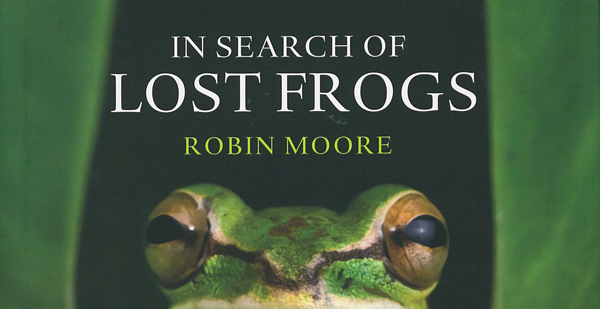In Search of Lost Frogs: The Quest to Find the World’s Rarest Amphibians
By Robin Moore (Bloomsbury Natural History, $39.99)
‘As her rigid limbs were squeezed into a jar filled with frogs like pickled eggs back at the lab in Quito, she took her place in a growing queue of species to be named and mourned. Her companion would join her just weeks later; both of their lives taken by a silent killer that was on the move, from Costa Rica to Ecuador and Australia to California.’

From left: The lemur leaf frog (Hylomantis lemur) and the crowned tree frog (Anotheca spinosa). Photos: Robin Moore.
In 2010, Robin Moore was tasked with coordinating 33 teams across 19 countries on a hunt for rare amphibian species. As director of the amphibian programme at Conservation International, it fell to him to investigate what many experts were beginning to think of as a global pandemic. Near half of the globe’s 7,000 amphibian species are threatened or near extinction, while more than 250 have not been since since the turn of the millennium.
Moore led two expeditions into Colombia and Haiti, the latter having just been struck by a devastating earthquake earlier that year. This book, In Search of Lost Frogs, therefore covers these journeys in great detail, while also including a broad range of details related to the central question of amphibian biodiversity loss.
In many ways, the title provides clear insight into what you might expect: much of the information is given over to discussing the species that Conservation International’s programme found, as well as those it didn’t. Yet the combination of Moore’s impassioned prose alongside his beautiful photography means these tracts are far from dry.
Discover how frogs help to maintain the health of planet Earth as well as the reasons why they’re rapidly disappearing from it. Meet the conservationists trying to monitor and protect the remaining species before learning about the ‘Lazarus project’ that hopes to revive lost species. Above all, share in the author’s anguish in the futility of spending the length of his career searching for the mesopotamia beaked toad only for it to remain elusive.
Despite many disappointments along the way, Moore are his teams’ perseverance resulted in the rediscovery of 15 lost frog species, including:
- The Rio Pescado stubfoot toad of Ecuador (not seen since 1995)
- Six species in Haiti such as the Ventroloquial frog (not seen since 1990)
- The Dehradun stream frog (seen once in 1985) and the elegant tree frog (1937) of India
- The Omaniundu reed frog (not seen since 1979) of the Democratic Republic of Congo
- Mount Nimba reed frog (not seen since 1967) of the Ivory Coast
This book is in many ways a reflection of the entire state of the planet’s health, just as amphibians are often used to reflect the state of the waterways they inhabit. Much has been lost and there’s still plenty to lose, but within all of the mourning and nostalgia there’s also some hope; there are still discoveries yet to be made.



